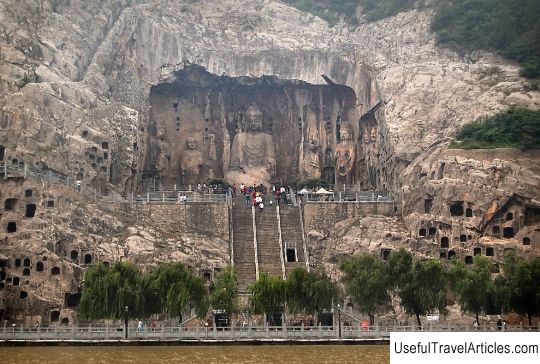Mogao cave temples in China
Rating: 8,2/10 (1676 votes)  Mogao is the largest cave of the Qianfodong Buddhist temple cave complex. It was built in 353 AD, 25 kilometers from the Dunhuang Oasis in China's Gansu province. The Qianfodong complex was often called Mogao, after the name of the largest cave. It unites about 500 sanctuaries, which have been decorated with sculptures and frescoes for a thousand years. Mogao, together with Bezeklik The Cave of a Thousand Buddhas is one of the earliest Buddhist temples in all of China. The temple complex was formed here not by chance - it was here that caravans passed, along with which Buddhist teachings came to China. In this temple, in contrast to later similar buildings, fresco painting prevailed over sculpture. The area of the entire complex is 42 thousand square meters. All frieze-shaped multi-figure paintings are made on dry ground with variegated glue-based paints. Many people occupy whole walls in caves. The murals are distinguished by vitality and dynamism. The frescoes in the caves of the Qianfodong complex are a layer of Chinese fine art, a whole thousand years old. The stylistics of the images allows them to be divided into four time periods: the Sui and Northern Dynasties, the Tang Dynasty (the most magnificent images), the Song Dynasty and the"Ten Kingdoms" era, as well as the Yuan and Western Xia dynasties. Almost all of the frescoes are dedicated to the Buddha, his jatakas and sermons, as well as apsaras, bodhisattvas and pious believers. Most likely, these murals were needed to present the Buddhist canons to illiterate residents. Some of the paintings are historical - they depict real events. Almost all caves have murals with images of apsaras. On them they dance, sing, play various musical instruments, scatter flowers, and also accompany the Buddha who reads sermons. They have no wings, and long colored ribbons help them to stay in the air. The rest of the paintings are dedicated to events taking place in everyday life: the meeting of Western and Chinese merchants, the emperor's departure, a tournament of warriors, foreigners at a feast, a wedding, hunting, musical performances and more. The frescoes reflect people of different social strata and nationalities, their life and clothing.   We also recommend reading New fortress in Greece, Corfu resort Topic: Mogao cave temples in China. |




